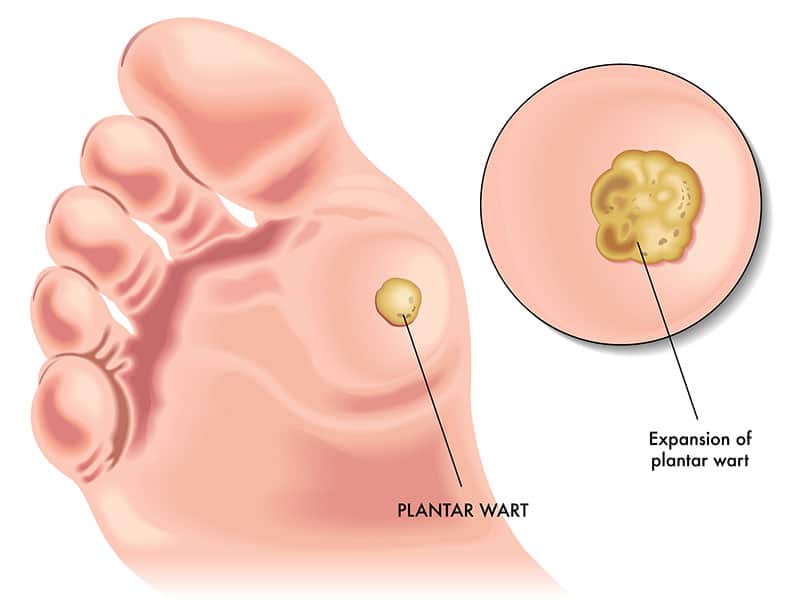Plantar Warts Risk Factors – Symptoms – Causes – Treatment

Plantar warts are grainy, hard growths which usually appear on the balls or heels of your feet and other areas which feel the most pressure. This pressure can also cause the plantar wart to grow inwards beneath the thick and hard layer of the skin. HPV or Human Papillomavirus are the main causes for plantar warts and this type of virus enters the body through breaks, tiny cuts, and weak spots on the bottom of your leg. Treatment is not a must for most of the plantar warts and is not a very serious health concern. But plantar warts can cause pain and discomfort. If the home remedies or self-care treatments are ineffective, then visiting a doctor will be the best choice.
Symptoms
• Tenderness or pain when standing or walking.
• A fleshy, small, and rough grainy growth on the bottom of your feet.
• Callus or hard thickened skin present over a well-defined spot on the skin. This is the spot where the plantar wart has grown inwards.
• A lesion which interrupts the ridges and normal lines in the skin of your feet.
• Wart seeds which are small blood vessels or black pinpoints.
Causes
The cause of plantar warts is due to the infection by HPV in the outer layer of the skin on the sole of the foot. Over 100 different types of HPV exist, but only some of them will cause warts on your feet. Other kinds of HPV will cause warts on other parts of the skin or on mucous membranes.
The immune system for different people responds differently to the HPV. Everyone who comes in contact will not get affected by plantar warts. People in the same family will react differently to the virus. The virus will not be transmitted directly from one person to another and so they aren’t highly contagious. The virus may be contracted when you walk barefoot around the swimming pool or locker rooms. There is a chance for more warts to appear if the virus spreads from the 1st site of infection.
Risk Factors
This particular kind of plantar wart can affect mostly among teenagers and children, people with weak immune system, people who suffered from plantar warts in the early stages and also among the people who walk barefoot around the locker room or pools.
Diagnosis
• Examine the lesions
• Checking the signs of dark pinpoint dots and paring the lesion with a scalpel.
• Remove a small portion of the lesion and send it to a laboratory for analyzing.
Treatment
Most of the warts disappear without any treatment but many take up to a year or two. But some of them might be severe and so treatments will be recommended by your doctor. This includes the treatment with strong peeling medicine or salicylic acid. Cryotherapy or freezing medicine is another treatment method recommended by many doctors. Surgical treatment may be recommended if the above methods are ineffective.








